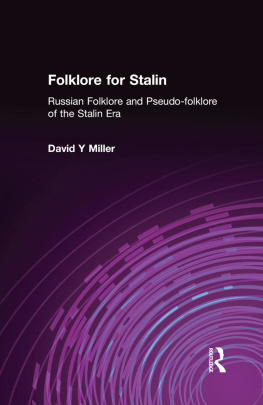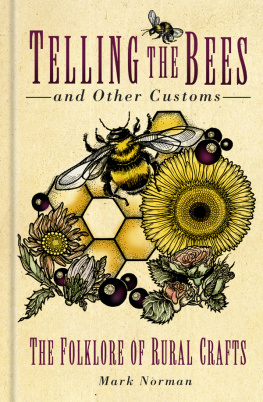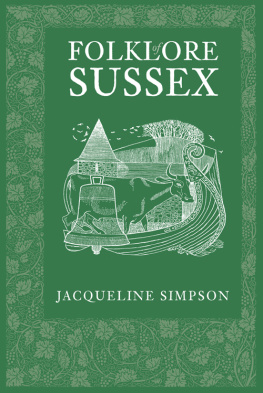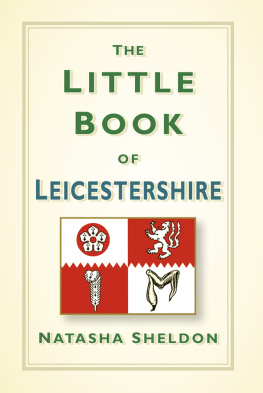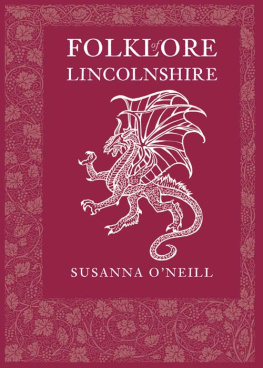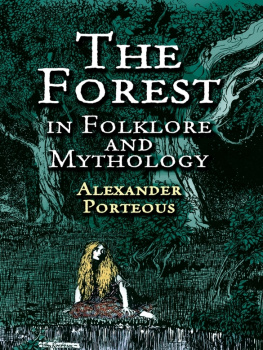County Folk-Lore
Leicestershire and
Rutland
By
Charles James Billson
CONTENTS.

LIST OF AUTHORITIES.

A Flora of Leicestershire. By Mary Kirby. 1850.
A History of Guthlaxton Deaneries and adjacent Parishes. By the Rev. C. Holme. 1891.
An Essay an English Municipal History. By James Thompson. London. 1867.
Aubrey. Remaines of Gentilisme. Folk-Lore Society. 1880.
Black, W. G. Folk Medicine. Folk-Lore Society. 1883.
Blore, Thomas. The History and Antiquities of the County of Rutland. 1811.
Brands Popular Antiquities. 3 vols. London (Bohn). 1890.
Burton, William. The Description of Leicestershire. 1622.
Bygone England. W. Andrews. 1892.
Bygone Leicestershire. W. Andrews. 1892.
Chamberss Book of Days. 2 vols. 1864.
Dyers British Popular Customs. (Bohn.) 1876.
English Folk Rhymes. By G. F. Northall. London. 1892.
Ecans, A. B. Leicestershire Words, Phrases, and Proverbs. (Ed. Sebastian Evans.) 1881.
Folk-Lore and Procincial Names of British Birds. By the Rev. C. Swainson. London: Folk-Lore Society. 1886.
Folk-Lore Record.
Folk-Lore Journal.
Folk-Lore.
Gentlemans Magazine Library. 4 vols. Popular Superstitions, 1884; English Traditions, 1885; Manners and Customs, 1883; Dialect Proverb Word-lore, 1884.
Gipsy Sorcery and Fortune Telling. By C. G. Leland, London. 1892.
Gomme, G. L. Folk-Lore Relies of Early Village Life. 1883.
Gomme, G. L. Primitive Folk-Moots. 1880.
Gomme, Mrs. Traditional Games. Vol. I. 1894.
Grose, F. Provincial Glossary. 1811.
Henderson, W. Folk-Lore of the Northern Counties. Folk-Lore Society. 1879.
Holy Wells, their Legends and Superstitions, by R. C. Hope, F.S.A., F.R.S.A. London: Elliott Stock. 1893.
Kelly, Wm. Notices relating to the Drama, etc., Sixteenth and Seventeenth Centuries. 1865.
Leicester Journal.
Leicestershire Chronicle.
Leicester Daily Post.
Leicestershire Notes and Queries.
Macaulay, Rev. A. History of Claybrook. 1791.
Music and Friends. By William Gardiner. 3 vols. 1838.
Naology; or a Treatise on the Origin, Progress, and Symbolical Import of The Sacred Structures of the Most Eminent Nations and Ages of the World. By John Dudley, M.A., Vicar of Humberston and of Sileby, Leicestershire. London. 1846.
National Tales and Legends. W. C. Hazlitt. 1892.
Nichols History of Leicestershire. 4 vols. in 8, fol. 1795-1811.
North, Thomas. Church Bells of Leicestershire. Leicester. 1876.
North, Thomas, Chronicle of the Church of Saint Martin. 1866.
North, Thomas. The Church Bells of Rutland. 1880.
Notes and Queries. Choice Notes (Folk-Lore). 1859.
Potter, T. R. History of Charnwood Forest. 4to. 1842.
Rays English Proverbs. 4th Edition. 1768.
Royal Progresses and Visits to Leicester. By William Kelly, F.S.A., F.R.H.S. Leicester. 1884.
The Parish Records of Market Harborough. By the Rev. J. E. Stocks and W. B. Bragg. London. 1890.
Thompson, J. History of Leicester to end of Eighteenth Century. 2 vols. 1849-71.
Throsbys History of Leicester. 4to. 1791.
Throsbys Select Views of Leicestershire. 2 vols. 4to. 1790.
Transactions of the Leicester Architectural and Archological Society.
Transactions of the Leicester Literary and Philosophical Society.
Weather-Lore. Richard Inward. London. 1893.
PREFATORY NOTE.

THE classification adopted in this compilation is that recommended by Mr. G. L. Gomme in The Handbook of Folk-Lore, published by the Folk-Lore Society in 1890, p. 6.
The Editor ventures to suggest that if the same classification be adopted in all forthcoming numbers of this series, the critical work of reference and comparison will be greatly facilitated.
It is believed that a large proportion of the recorded folklore of the two counties is comprised in the extracts here given. Many of them may prove to be of no scientific value, but the Editor thought it wise to be liberal in giving them the benefit of any possible doubt.
Thanks are due to the Members of the Local Committee who have assisted the Editor in the task of examining printed authorities and making extracts, and especially to those who have begun to collect the oral tradition of the Counties, a few samples of which are included in these pages.
Part I.
SUPERSTITIOUS BELIEFS AND PRACTICES.

(a) SUPERSTITIONS CONNECTED WITH INORGANIC
NATURAL OBJECTS.
HILLS.
Charley, a spot very near, is called the Giants Graves.
History and Antiquities of Charnwood Forest.
T. R. Potter, 1842, p. 105.
Bardon.The recollection that it was one of the high places where the Bards (hence its name) hymned the praises of their Sun-God and their heroes, and where Druidical superstition received its votaries and offered its victims, is one of the many associations connected with Bardon.
History and Antiquities of Charnwood Forest.
T. R. Potter, 1842, p. 161.
See Nichols, III., 126.
Superstition concerning the Dip of the Rocks.One venerable old man, at work in the Gate-house quarry, observing me searching for the dip, asked me, with a smile expressive of his consciousness of superior wisdom in such matters, Which way is Juda? I at once pointed my hand in a south-easterly direction. You are right, replied my mentor; find Juda, and you will find the direction of these rocks. Find the dip, and you will point to Juda. This is the case over the whole world, and has been so ever since the Saviours resurrection. I found Professor Sedgwicks anticlinal line theory at once destroyed!!!
Of course I did not attempt to shake a belief that seemed not unmixed with natural piety.
Potter, p. 89.
Beacon Fire.Mr. Langham of Needless Inn, informs me that he well remembers that thirty-four years ago there stood, on the highest point of Beacon, an erection of rude and ancient masonry, about six feet high, of a round form, and having in its centre a cavity about a yard deep and a yard in diameter, the sides of which were very thickly covered with burnt pitch. This, he says, had all the appearance of having been used for holding the beacon fires. He remembers, too, that at that period, the entrenchments above described were much more visible than they are now. He is the only person with whom I have conversed that seems ever to have noticed them, except Mr. William Lester, of Woodhouse; and they are not mentioned by any writer whatever, unless Gales remark applied to them. I discovered, by digging, many heaps of nearly perished mortar, mingled with fragments of stone and dark red brick.
History and Antiquities of Charnwood Forest.
T. R. Potter, 1842, p. 48.
Beacon Hill


